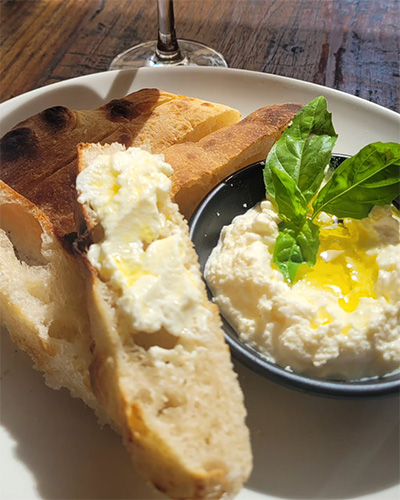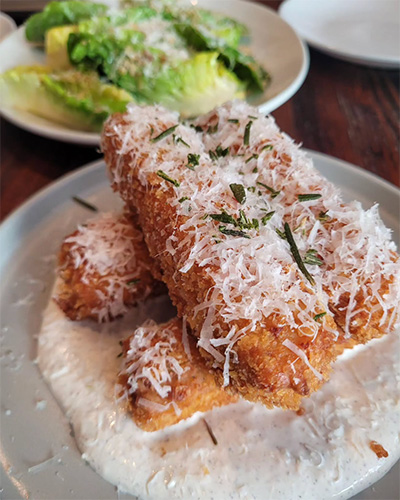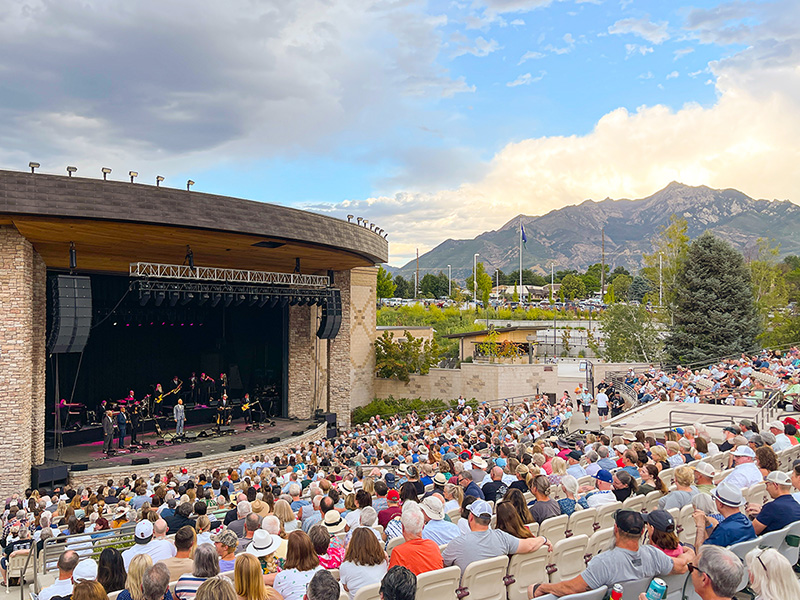
Admittedly, until working on this story I considered disc golf in the same fringy, hippie-ish category as kicking around a hacky sack or slacklining, i.e. something to do after a mountain bike ride, hike or river run, usually with a frosty recovery beverage in hand. It turns out that not only is disc golf a legitimate sport, with its own pro league called the PDGA (Professional Disc Golf Association), but it’s also a fantastic form of exercise for both your body and your brain.
“I lost 30 pounds when I started playing disc golf,” says Scott Belchak, founder and executive director of ElevateUT, a nonprofit dedicated to growing disc golf in Utah.
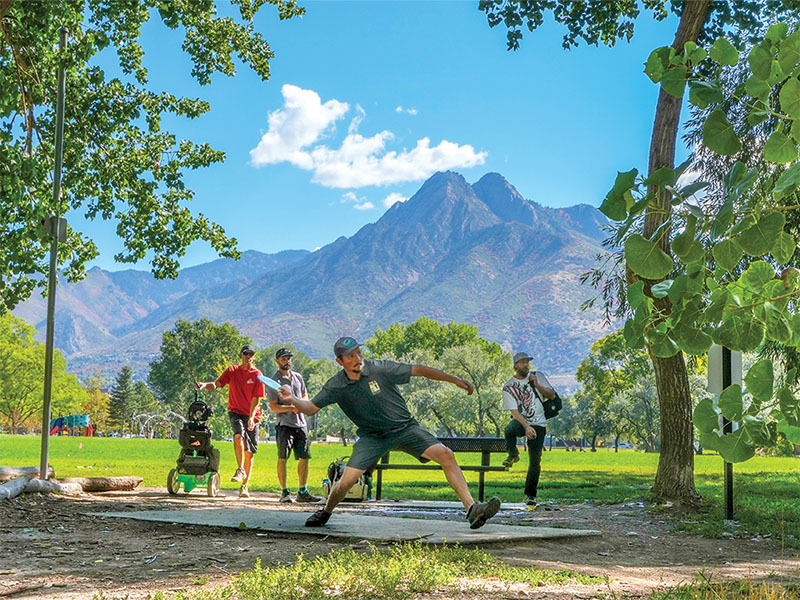
Courses around the Wasatch run the gamut of terrain from wooded parks to high-alpine scenery. Photo by Joseph Guong.
How to Play
Before I get into why disc golf is good for you, let’s discuss what it is. The rules for disc golf are like traditional golf, but rather than hitting a ball with a club toward an actual hole in the ground, disc golfers throw plastic discs, or Frisbees, toward elevated metal-chain baskets. (Fun fact: the Frisbee was invented in 1957 by Richfield, Utah native Walter Fredrick Morrison.) Most disc golf ourses have nine or 18 holes. (Yes, disc golfers still call them “holes” despite there being no holes.) Each disc golf hole has a designated par, and the player that logs the least number of throws for the round is the winner. The biggest divergence between traditional golf and disc golf is the course itself: rather than being situated on flat, somewhat one-dimensional fairways, bunkers and greens, disc golf courses utilize the land’s natural undulations and vegetation.
Because disc golf courses alter the land only minimally, carts are usually not typically used in play. As such, players are required to walk the entire course, usually around three to five miles. And walking, as you likely already know, is an excellent form of exercise. What’s more, walking in nature can provide a necessary mental reset. Last year University of Utah researchers Amy McDonnell and David Strayer published results from a study where subjects walked around Red Butte Garden wearing electroencephalography (EEG) sensors. They found that after walking the garden, study participants experienced improved executive control (the ability to solve problems, make decisions and coordinate disparate tasks). And then all that aiming and tossing of a plastic disc into metal baskets enhances your hand-eye coordination, too.
“Because you’re using your hand and arm to propel the disc, versus a club to hit a ball, and because disc golf baskets are raised rather than sunken into the ground, players have a more intimate relationship with the action itself as well as the environment disc golf courses are set within,” Belchak says.
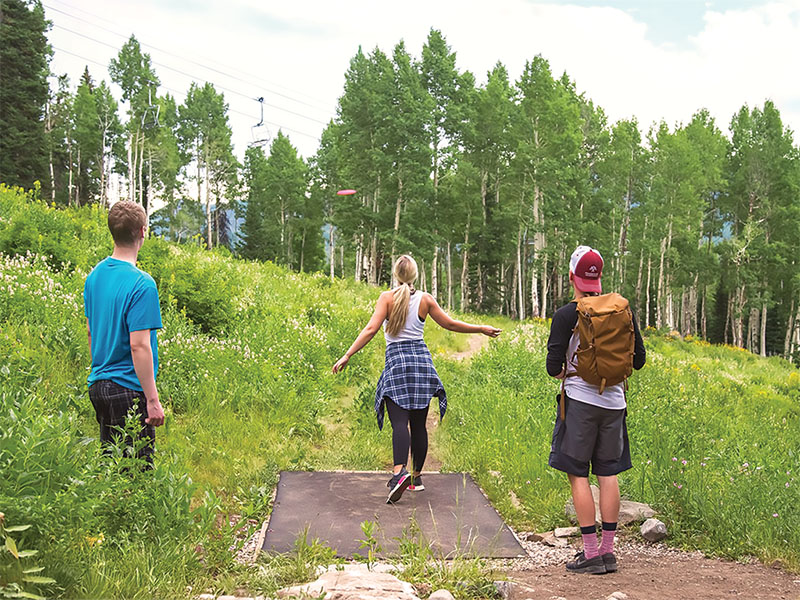
The disc golf course at Solitude resort combines a great hike with a challenging arrangement of “holes.” Photo courtesy of Ski Utah
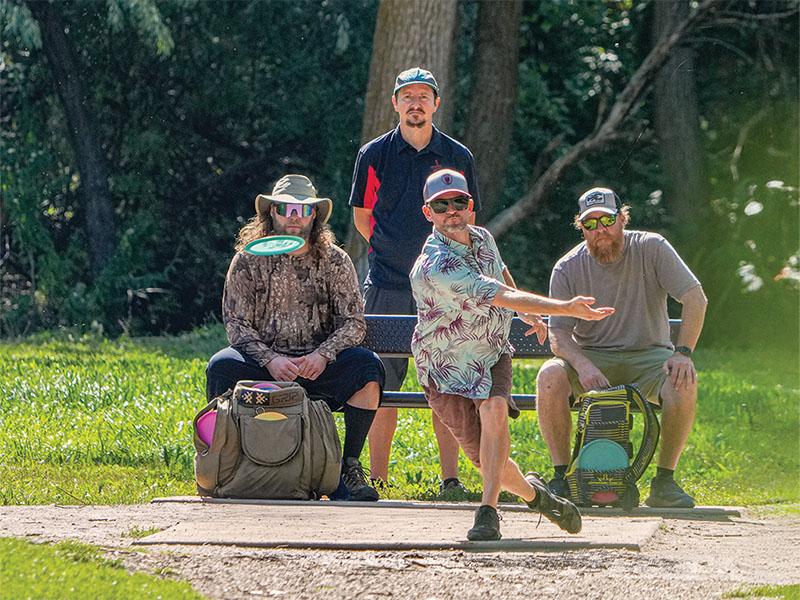
Unlike traditional golf, disc golf has a relatively low cost of entry and a much more casual vibe. Photo by Joseph Guong.
Cost to Play
What’s more, disc golf has one of the lowest costs of entry for a summer sport you’ll find, by far. It’s free to play 95 percent of disc golf courses across the U.S., including the dozens here in Utah (with many more on the way). And a beginner-level disc set, which Ben Marolf, owner of Utah’s only disc golf shop, Another Round (6092 S. 900 East, Murray), says should include a driver, a putter and a mid-range disc, will set you back only about $30. (In addition to carrying both new and used discs, Marolf’s store is a great resource for disc golf league info and, after the store’s liquor license comes through this summer, enjoying a post-round cold beer.)
Where to Play
Wasatch Front beginner-friendly disc golf spots include park-style courses like:
1. Disc on 6th, a 9-holer at Midvale City Park (425 6th Ave., Midvale)
2. Tetons, a family-friendly 9-holer within West Jordan’s Teton Estates Park (9380 Targhee Dr.)
3. River Bottoms, a newer disc-golf track offering 9 holes for novices alongside a more advanced 18-hole course, designed in part by Belchak at Rotary Park (958 W. 12300 South)
Discover more outdoor inspiration, and find all our Adventure coverage. And while you’re here, why not subscribe and get six annual issues of Salt Lake magazine’s curated guide to the best of life in Utah?


